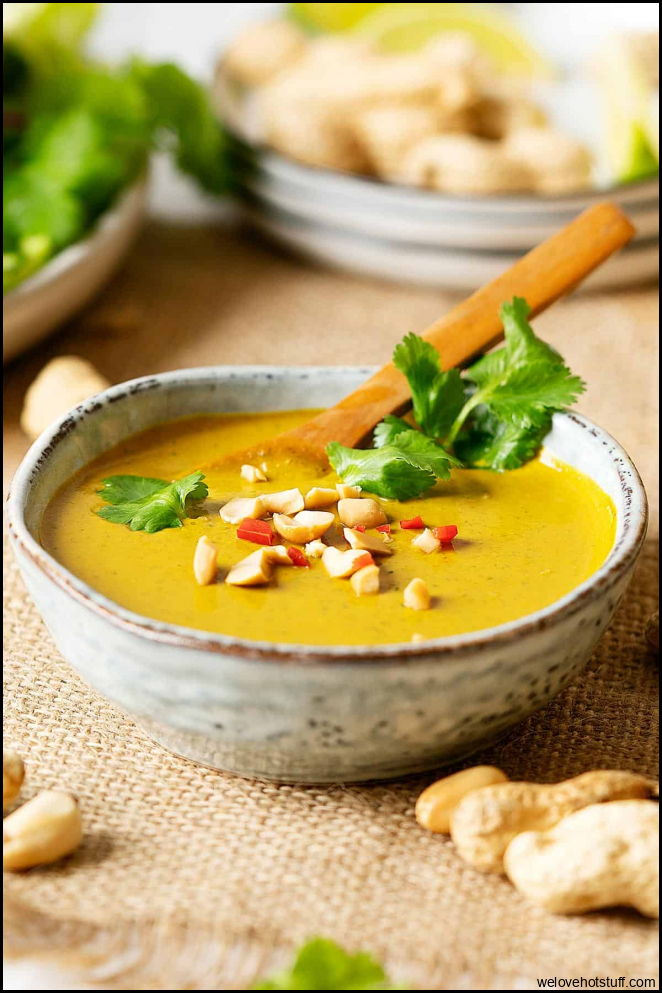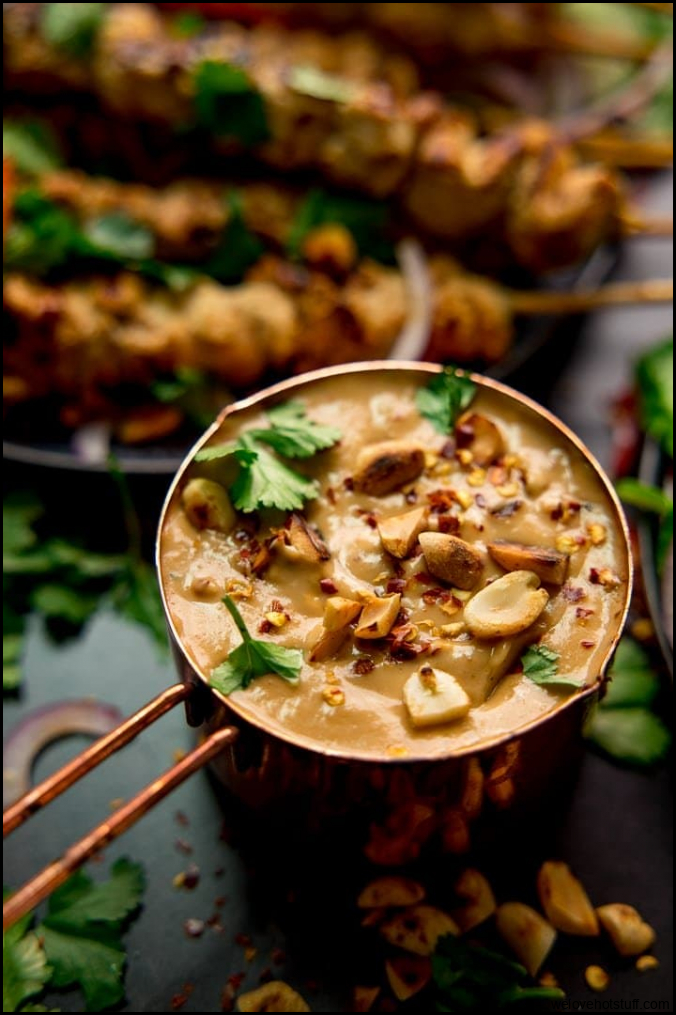Whether you’re a fan of Indonesian cuisine or simply looking to add a new flavor to your homemade dishes, satay sauce is a versatile and delicious option. This exotic sauce is known for its rich and complex flavors, combining tangy, spicy, and nutty elements in perfect harmony. While it may seem daunting to recreate such a culinary masterpiece at home, with the right ingredients and techniques, you can easily turn up the heat in your kitchen and master this delectable satay sauce.
1. The Perfect Peanut Base
/real-satay-peanut-sauce-3217299-Hero-5b96cada4cedfd0050a1df92.jpg)
Easy Authentic Thai Satay Peanut Sauce Recipe
At the heart of any satay sauce lies the humble peanut. Peanuts not only provide a creamy texture but also infuse the sauce with their unique nuttiness. To create an authentic satay sauce, start by toasting raw peanuts until they develop a deep golden color. This process enhances their flavor and releases their natural oils.
Once toasted, allow the peanuts to cool before grinding them into a fine powder using a food processor or mortar and pestle. For added depth of flavor, consider using roasted peanuts or experimenting with other nuts like cashews or almonds.
2. Balancing Bold Flavors

5-Minute Peanut Satay Sauce – El Mundo Eats
Satay sauce is renowned for its ability to strike a balance between bold flavors. Achieving this balance requires careful consideration of each ingredient’s role in the overall taste profile.
To add acidity and tanginess to your sauce, include freshly squeezed lime juice or tamarind paste. These acidic elements help cut through the richness of the peanuts and add a refreshing zing to the sauce.
Spices play a crucial role in satay sauce, delivering a delightful heat and complexity. Traditional Indonesian spices like coriander, cumin, and turmeric are commonly used. For an extra kick, consider adding chili flakes or fresh chili peppers.
In addition to heat and acidity, satay sauce often incorporates sweetness to balance out the flavors. Palm sugar or brown sugar are popular choices for achieving this delicate balance. These sugars lend a caramel-like sweetness that complements the other bold components of the sauce.
3. Achieving Textural Excellence

Easy Satay Sauce Recipe – Nicky’s Kitchen Sanctuary
Achieving the perfect texture is essential in creating an exceptional satay sauce experience. The texture should be smooth and creamy, allowing it to coat meat or vegetables evenly.
To achieve this desired consistency, utilize coconut milk as a base for your sauce. Coconut milk adds creaminess without overpowering flavors, complementing both savory and spicy elements. Be sure to use full-fat coconut milk for a richer texture.
To further enhance texture and bring out deep umami notes, include ingredients like shrimp paste or soy sauce. These umami boosters elevate your satay sauce from good to extraordinary, providing a satisfying mouthfeel that keeps you coming back for more.
Conclusion

How to Heat Up Satay Sauce Video Tutorial | BBQ Wholesale Centre – YouTube
Elevate your culinary skills by mastering the art of making homemade satay sauce. With the right ingredients, careful balance of flavors, and attention to texture, you can create a sauce that rivals those found in the finest Indonesian restaurants.
Experiment with variations and make this versatile sauce your own. Whether you’re drizzling it over grilled chicken skewers, using it as a dip for fresh vegetables, or incorporating it into stir-fried dishes, your homemade satay sauce is sure to bring a dash of exotic flavor to any meal.
/real-satay-peanut-sauce-3217299-Hero-5b96cada4cedfd0050a1df92.jpg)
Easy Authentic Thai Satay Peanut Sauce Recipe